In an industry shaped by nuance, rarity, and emotion, colored gemstones continue to command attention—from high jewelry ateliers in Place Vendôme to emerging designers redefining heirloom chic. As the global jewelry landscape evolves, the appetite for color grows bolder, more informed, and deeply personal. This blog explores the top trends shaping the colored gemstone market in 2025. Whether you’re a retailer, gem dealer, or collector, these insights are designed to help you navigate a sector where color is more than an aesthetic—it’s a story waiting to be told.
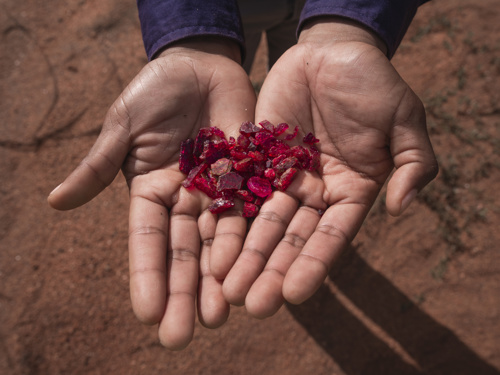
Whether you consider international auctions of precious stones and jewelry, trade shows, or the high jewelry collections of global houses like Cartier, Bvlgari, and Chaumet, one theme is unmistakable—color is everywhere. Magnificent emeralds, vivid blue sapphires, vibrant garnets, and neon tourmalines: a visual feast matched only by the richness of their origins and stories. But what has triggered this amplified desire for color? Which gems are capturing the market’s imagination, and which are quietly waiting for their breakout moment?
To understand where the appetite for color is headed, it helps to trace the shift in how value and desirability have been shaped over time.
In the late 19th century, diamonds dominated jewelry narratives—largely thanks to South Africa’s mineral-rich earth, De Beers’ consolidation of supply, and a marketing masterclass that transformed a mineral into a global status symbol. Their consistent supply made them bankable. Their storytelling made them aspirational.
Colored gemstones, in contrast, have always been nature’s rare, unpredictable treasures—formed by unique geological phenomena and discovered sporadically across the globe. The African continent, now the primary source for nearly 80% of all colored stones, only began revealing its gemstone bounty in earnest after the 1960s. Unlike diamonds, these deposits are far less standardised, and that’s exactly what makes them compelling.

A major turning point came in the 2000s when Gemfields invested in large-scale mining of emeralds in Zambia and rubies in Mozambique. Through auction platforms, gemstone-grading systems, and consistent branding, they helped bring transparency, volume, and a global spotlight to colored stones—especially emeralds and rubies. Their efforts laid the groundwork for what we’re seeing today: color moving from the periphery to centre stage in both fine and high jewelry.
Top Colored Gemstone Trends in 2025:
1. Beyond the Trifecta
While emeralds, rubies, and sapphires remain evergreen, jewellers are embracing other accessible yet captivating stones such as tourmalines, aquamarine, kunzite, morganite, and tanzanite. These gems bring both vibrancy and affordability.
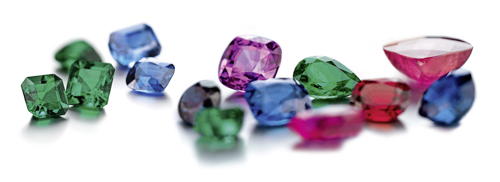
2. New Collectible Contenders
Six additional gems have joined the top-tier collectible category:
• Red and pink spinels
• Paraiba tourmalines
• Tsavorite (green grossular garnet)
• Spessartite (orange garnet)
• High-quality red tourmalines (rubellite)
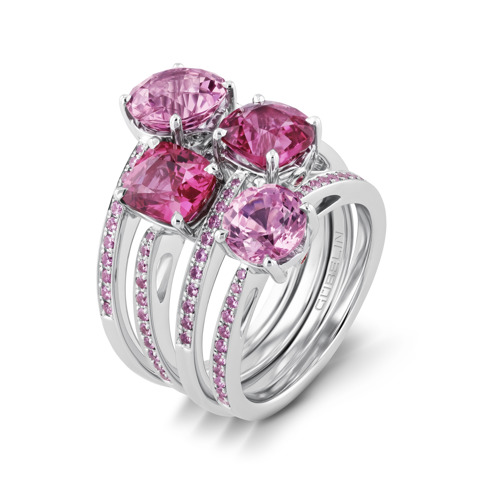
3. Refined Aesthetics in Cutting
Demand has shifted from ornate carved gems to stones featuring precision cutting and high-polish finishes. Jewelry houses are experimenting with unusual shapes and facet patterns that elevate the gemstone’s natural brilliance.
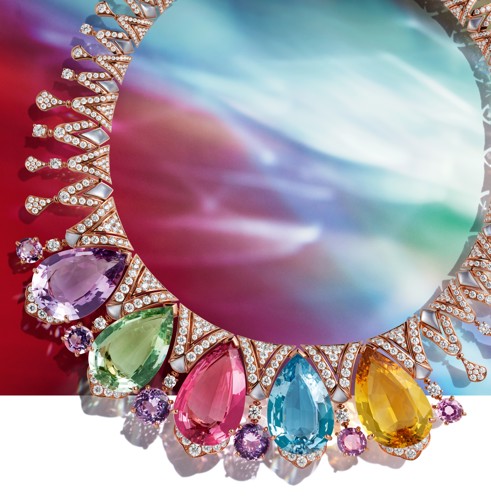
4. Vintage Touch with a Modern Twist
European high jewelry brands such as Cartier, Van Cleef & Arpels, and Chopard (to name three) are leaning into vintage-inspired faceting—fewer facets on the table, top-grade cabochon-cut gems, echoing older cutting styles—bringing a nostalgic elegance to contemporary designs.
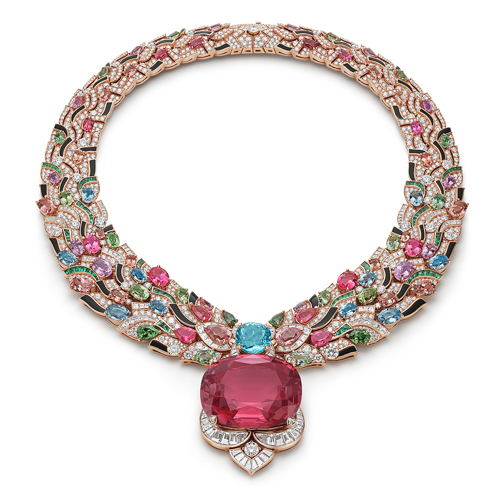
5. Diamond Dealers Enter the Arena
As the diamond industry faces price and demand challenges, many diamond specialists are transitioning into the colored gemstone space. Their expertise in layout design and cutting precision is creating dynamic gemstone-diamond hybrids in jewelry.
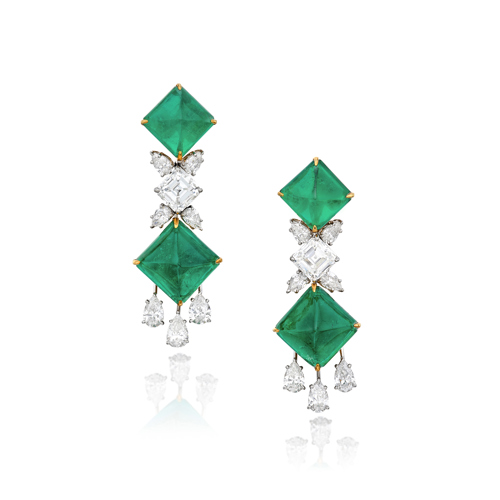
6. Beaded Beauties
Faced with rising gold prices, jewellers are leaning into the poetic versatility of gemstone beads—layering multiple strings to create volume, movement, and a burst of color. From multi-hued tourmalines to richly saturated spinels, rubies, tanzanites, and emeralds, beadwork is no longer just a supporting act—it’s the main event, allowing creativity to flourish even as metal margins tighten.
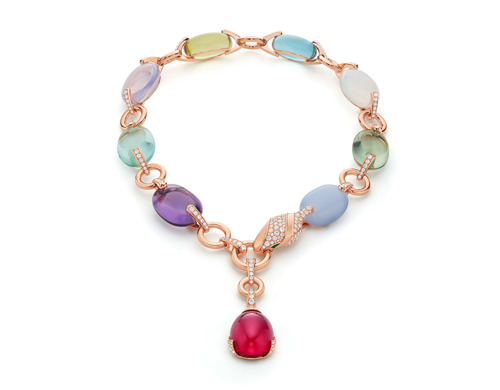
7. The Untreated Obsession
Consumer awareness has grown exponentially, with an increasing premium placed on untreated stones. The most coveted include:
• No-heat rubies and sapphires (especially padparadscha, pink, blue, and yellow)
• No-oil emeralds
• Untreated spinels and tsavorites
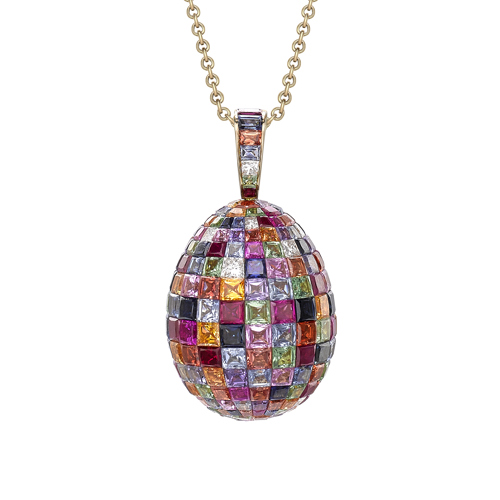
8. Acceptable Enhancements
There’s also robust demand for treated gems where disclosures are clear and quality remains high:
• Heated rubies and sapphires
• Slightly oiled emeralds
• Paraiba tourmalines
• Rubellite
• Multi-gem layouts mixing sapphires, spinels, and tourmalines
• Aquamarine, morganite, kunzite, and tanzanite
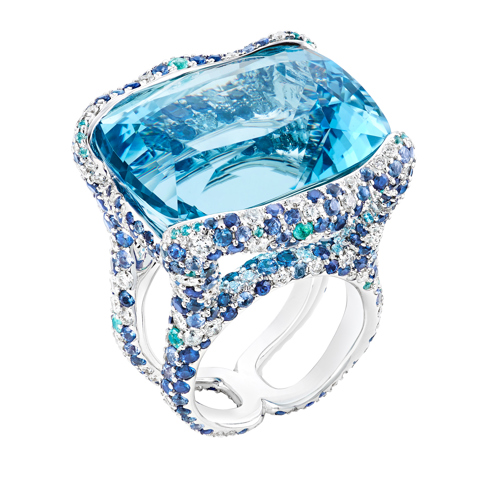
The gem trends listed above are not just theory—they are backed by market behaviour. The June 2025 High Jewelry auction by Sotheby’s is a case in point. A 7.50-carat Kashmir sapphire from the 1930s fetched $1.4 million (estimate: $500,000–700,000), and an 8.62-carat Colombian emerald and diamond ring by JAR sold for $1.6 million (estimate: $500,000–700,000), both significantly exceeding expectations.
As Quig Bruning, Head of Sotheby’s Jewels, Americas & EMEA, succinctly put it: “Today’s top prices were dominated by exceptional stones of extraordinary color. These results reaffirm what we have long understood: that provenance, rarity, and exceptional craftsmanship continue to ignite the passions of collectors.”
The rise of colored gemstones is more than a trend—it’s a recalibration of value, taste, and narrative in the jewelry world. From geological miracles in African terrains to red carpets in Paris, color is fast becoming the new language of luxury. But unlike the diamond-dominated decades of the past, today’s gemstone market is fluid, diverse, and driven by authenticity. As awareness grows and supply chains professionalise, colored stones are no longer just alternatives—they are leading characters in a jewelry market that’s rediscovering its most elemental joy: storytelling through color.
Whether you're a buyer or supplier of colored gemstones, RapNet is the marketplace for trusted online gem trades, 24/7 and at the best prices. Click here to join RapNet today.


 RapNet Blog
RapNet Blog
![Diamonds 6[1][1]](/media/2120/diamonds-6-1-1.png)